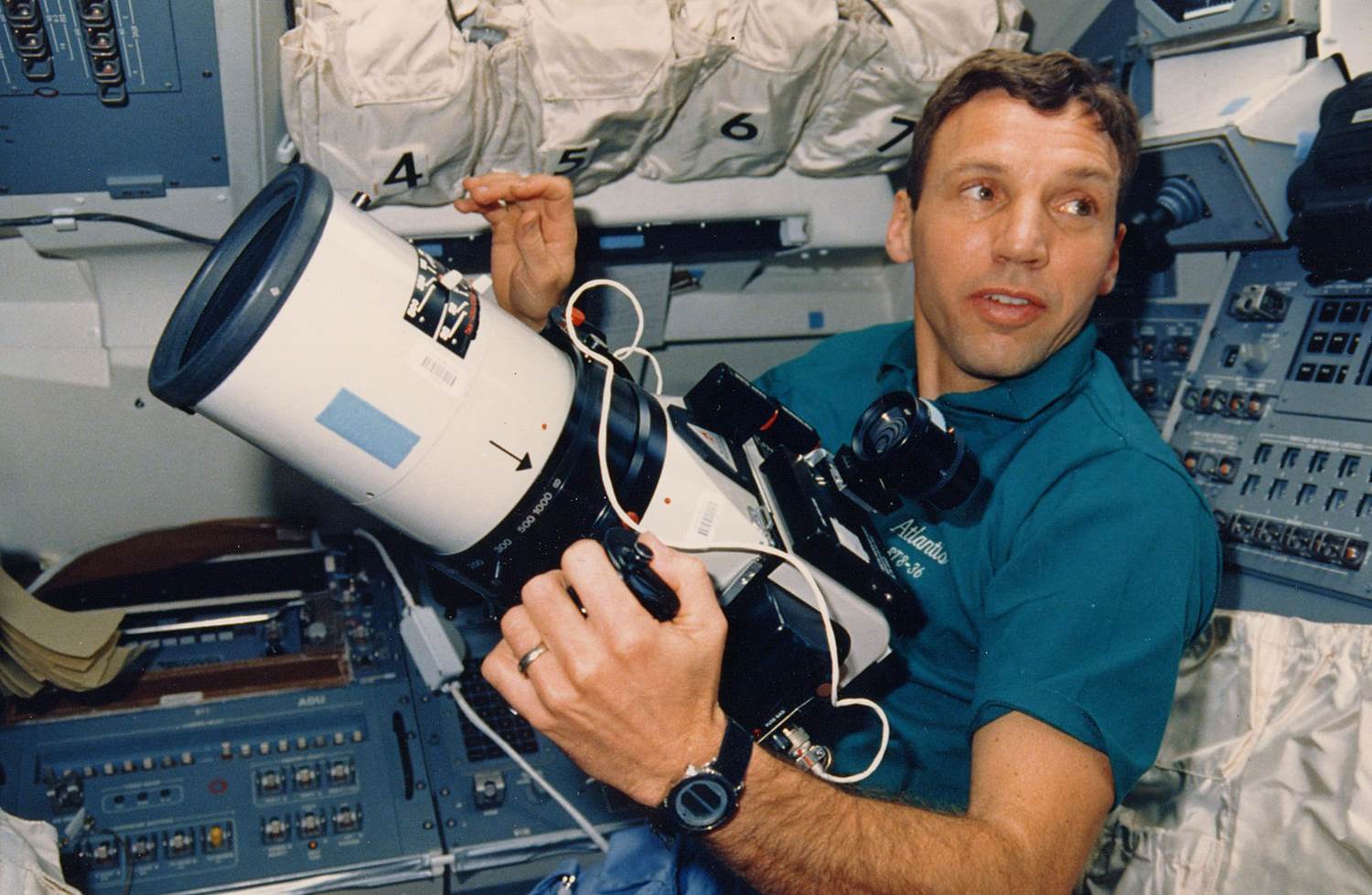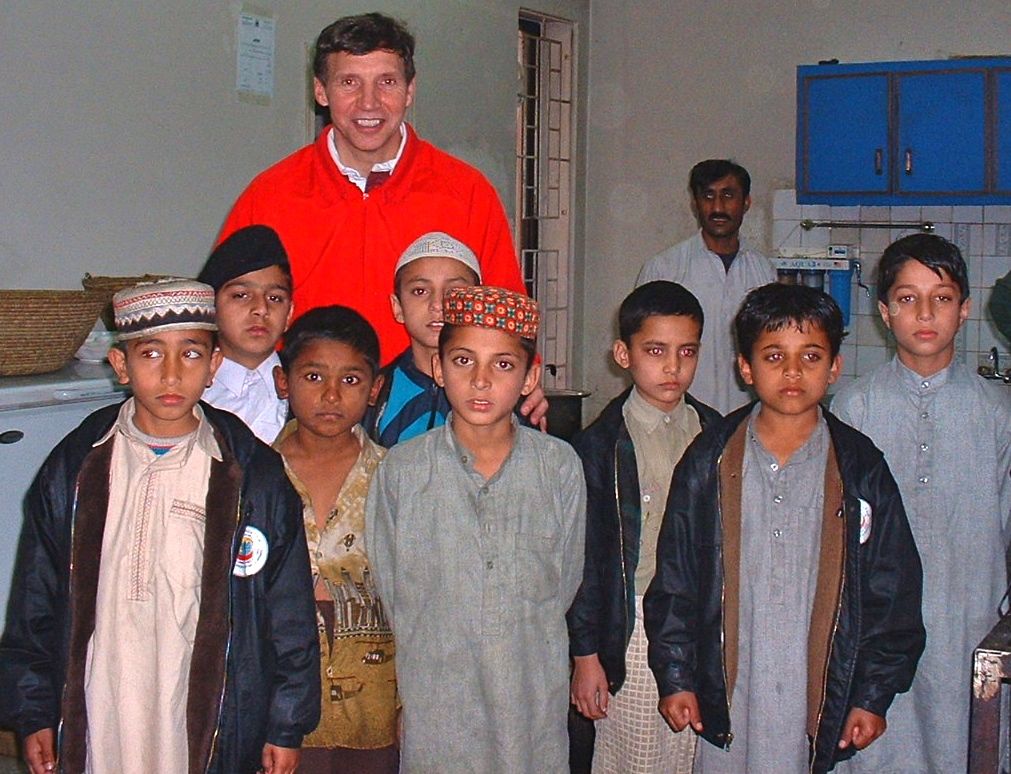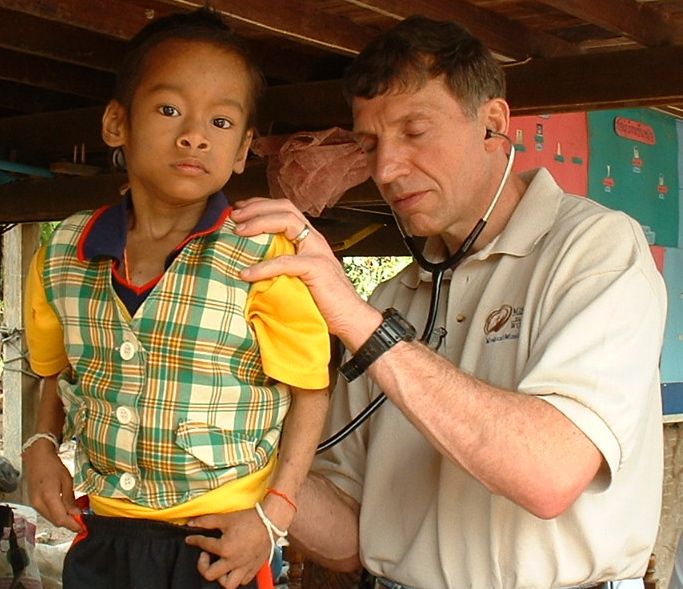After spending the first part of his career seeing the world as a Marine Corps colonel and a NASA astronaut on four space shuttle missions, David C. Hilmers thought that the time was ripe to make his real dreams come true. He went back to school and attended Baylor College of Medicine to become a doctor. Now he is devoting his life to helping people, seeking solutions against malnutrition and disease.
Today, Hilmers works in the departments of internal medicine and pediatrics at the Baylor College of Medicine in Houston, Texas (USA), where he teaches medical students and residents. But he also spends much time on international clinical projects and in the field of disaster relief. With wide-ranging interests and persistent energy, he nurtures professional interests that range from emergency and tropical medicine to HIV, and foods fortified with micronutrients to helping discover ways to keep future astronauts healthy on their way to Mars.
During the week-long course on science diplomacy offered this month by TWAS and the American Association for the Advancement of Science (AAAS), Hilmers inspired the audien ce with his opening lecture. Afterward, he talked with TWAS staff writer Cristina Serra about the importance of science diplomacy in overcoming conflict and solving human problems.
ce with his opening lecture. Afterward, he talked with TWAS staff writer Cristina Serra about the importance of science diplomacy in overcoming conflict and solving human problems.
As a young boy, born in a small city in Iowa, did you ever dream of becoming an astronaut?
I grew up in DeWitt, Iowa, in a very homogeneous community. There were probably 2000 people in the town and since my father owned a greenhouse, I grew up loving plants and developed a strong work ethic. I was like many other kids: I used to play; I collected rocks, played baseball. Those were the years of the Sputnik mission and even if I was wondering about the significance of that event, I always had an interest in medicine and I thought of helping out people around the world.
Why did you join the Marine Corps at 22 and become and astronaut some years later?
A number of circumstances made me deviate from the path to practicing medicine. After high school and college, the Vietnam war was still going on and I was called into military service. I ended up going to flight school and after a few years, the Marines offered me the opportunity to go back to school, so I decided to stay in the service and received two graduate degrees in electrical engineering, even though my true desire was to go back to medical school. Then, one day while I was serving in Japan, I saw an announcement from NASA to apply to become an astronaut in the upcoming Space Shuttle program. Even though I had never thought much about it before, I seemed to have the qualifications that they were looking for. I applied and was one of 19 chosen from over 3,500 applicants.
Over 500 hours in space and four missions on the space shuttle: what is your most vivid memory from those days?
What struck me most was the view of Earth from space. You see the beauty of our planet and yet you realize what is really going on below… poverty … people with disease. I was struck to see how fragile is our beautiful planet, how delicate is the environment and how poorly we take care of it. I think that this really impressed me, and pushed me to become a doctor.
Did you ever experience any problems during your missions?
I never felt real danger; if fear came, it was before the launch. However, I remember that once we had a failure in a cooling system, and there was a sense of urgency as the temperature inside the shuttle rose to 95 degrees. But after a day or so the systems were restored to normal operating condition.
Your last mission was on board the International Microgravity Spacelab. What were your duties?
We had to carry out some 60 different experiments, many of them in the biomedical field, including studies on fruit flies, physics experiments, material science experiments, exploring plant growth. Several experiments tested the human vestibular system to see how it acts differently in microgravity. I had a German physicist as my partner, and we did a lot of experiments together switching roles between being the subject and being the experimenter. I remember that in one experiment we gave or received electrical shocks to our legs to see the response of the body, while in another we sat in a rotating chair which spun us along various axes, to investigate the electrical signals sent from the brain to the eyes, and how the vestibular system responded to zero gravity.
What do being an astronaut and a medical doctor have in common?
In both endeavors one needs to master very complex systems. As an astronaut one has to learn a lot about many subjects. You have to learn engineering, space science, orbital mechanics, flight rules, and learn the many intricate Shuttle systems. It required a lot of study. I found space medicine to be an extremely interesting topic – how the body functions differently in a weightless environment. I have discovered that studying medicine and diseases of the human body are even more complex.
What was your first project as a medical doctor?
The first project that I worked on after my post-graduate training was completed was as a physician in a pediatric international AIDS initiative. I did some clinical work in sub-Saharan Africa and in Botswana, and was involved in setting up a permanent clinic in Gabarone, Botswana. The project helped to build clinical infrastructure that did not exist before. Another project tried to develop collaboration between large pharmaceutical manufacturers to provide new AIDS drugs at lower costs than they were normally available. The US government was, and still is, also providing many of these drugs, within the PEPFAR (President’s Emergency Plan for AIDS Relief) programme. Today the group with which I began my career is treating more pediatric HIV patients than any other group in the world. In a way, we can see this as a science diplomacy initiative, as nations selected for low-cost treatments include developing nations across the globe. They are countries where HIV is highly prevalent.
And then?
I have been involved in a project against global malnutrition, which requires a combination of scientific expertise and science diplomacy. This project is called Vitingo, and has been a programme of the Coca-Cola Co. The aim of this initiative, which started around 2000, is to make a beverage fortified with micronutrients like iron, zinc, vitamins, and other minerals (15 different components) to be supplied to schools and also marketed. The starting point was an already existing orange-flavoured drink, which we used for the first clinical trials. In this project, I acted as a consultant using the local contacts that I had made when I was engaged in the HIV project.
Why do you say that this project requires science diplomacy and science?
We had to perform further tests to investigate how micronutrients are absorbed, as well as their stability inside the drink. We started working with the International Atomic Energy Agency (IAEA) because one of the laboratories with which I am associated uses stable isotopes in medical projects. The IAEA provides funding for medical research using stable isotopes so we worked with them and did analyses on these fortified foods. This is a peaceful use of stable isotopes, something that involves science diplomacy. It's not a project that will eliminate malnutrition, but in certain countries where it is distributed it can help.
Did you have any kind of problems to solve?
Another project in which I worked with the IAEA was to evaluate new food fortification programmes in developing countries. Many countries do not have food fortification programmes, and it is sometimes difficult to convince politicians to introduce new programs that cost money but may benefit the population of their country. Sometimes there is a second problem if the addition of micronutrients changes the food colour or taste. People who are used to the old-fashioned drinks or foods – like wheat, for example – tend to be resistant to the new ones which may have a different taste. However, we did research on these programmes in India, Indonesia, Pakistan, Sri Lanka and South Africa. Once you can provide scientific evidence of the benefits of these programmes and make new products that people will accept, only then you may start a campaign at the national level.
In recent years you have developed an interest in other tropical diseases, like malaria. What kind of research are you carrying out on this scourge?
One study, carried out in Gambia, aimed at clarifying the uptake of iron among children infected with malaria and in the life cycle of plasmodium, the parasite that is carried by the Anopheles mosquito. People are infected with malaria once the insect injects the parasite into the human body. Anemia is a consequence of malaria because the red blood cells, which contain iron, are destroyed by the plasmodium. The parasite relies on iron for its metabolism and its capacity to cause the disease, and iron supplementation is commonly used to treat post-malarial anemia in places where iron deficiency is common. But the question is: when should we supplement children with this iron if they live in a malaria-endemic region? In a case like the malaria one, scientific advice becomes important to orient political strategies.
Do you think that science diplomacy can somehow transcend the human tendency to conflict?
I think so. During my days in the space programme, I was involved in the initial phases of the development of the International Space Station, launched in 1998, working on some aspects of the first design. This programme has been a true scientific diplomacy initiative, as it has had multiple international partners, including Canadians, Japanese, Europeans, Russians, and the design process began during the last years of the Cold War. There, as well as more recently in North Korea, I – we – have learned that cooperation accomplishes much more than confrontation. We hope that we can replace opposition with cooperation.
What's going on in North Korea?
There's a wonderful collaboration going on, between the Democratic People's Republic of Korea (DPRK) and representatives of a U.S-based nongovernmental organization headed by James Kim, a Korean-American businessman who once survived a death sentence in Pyongyang. This collaboration takes place at the Pyongyang University of Science and Technology (PUST), where classes started October 2010. There, highly selected students – the brightest Korean students – are receiving an international education to become the leaders of tomorrow. Lessons are held in English, and the students have freedom to interact with the Western faculty. I have visited and lectured at the school on several occasions. This initiative represents an important step to bring the DPRK closer to others in the international community.
And you are involved in another project with DPRK. What is it about?
Another project that I am hoping to begin soon is research to determine the prevalence of hepatitis B and C viruses in North Korea and their role in causing liver cancer. The literature is very sparse on this topic in the DPRK, so I hope we can provide additional data and help to prevent these diseases. We want to see if we can identify markers that reveal the presence of hepatocellular carcinoma, which is often caused by these viruses. Also, we want to see the state of vaccination and education programmes in the country. Our hope is to establish a genuine cooperation between the Korean Ministry of Health and non-governmental organizations made of US and Korean-American physicians. The more we cooperate, the greater will be the understanding between our countries. These may seem just tiny steps, but if you multiply our efforts with others working together in many countries, scientific diplomacy can lead to significant results!
***
The course Hilmers took part in was part of the TWAS Science Diplomacy programme, which includes lectures, seminars, workshops, international meetings, and a regional prize. Other such events have included the Budapest science diplomacy roundtable, a science diplomacy workshop on energy policy and the 2nd MENA Educational Institute for Responsible Science. You can also read an announcement of the event, stories about the importance of the event and tracking the work of course participants, and an interview by TWAS with Vaughan Turekian.
For an engaging review of ideas and issues, read Science & Diplomacy, a journal published quarterly by AAAS, the American Association for the Advancement of Science.

